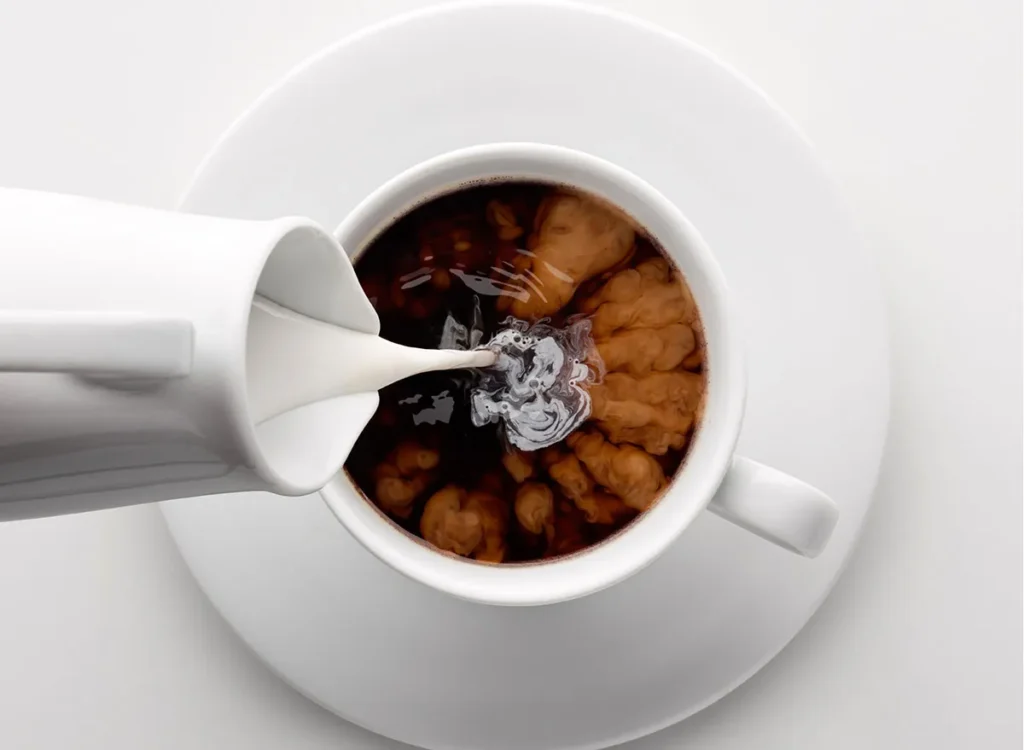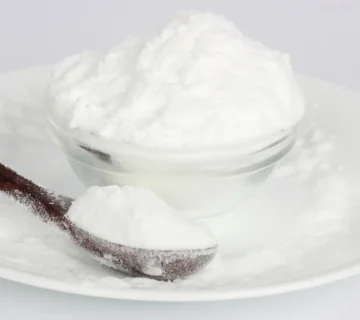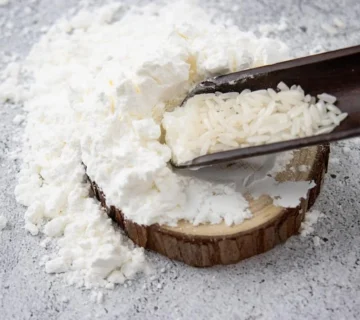You might think coffee is just beans, water, and heat—but in large-scale beverage production, that’s only the beginning. If you’re managing a plant that produces ready-to-drink coffee, instant coffee mixes, liquid concentrates, or coffee-based beverages, additives and sweeteners become crucial variables in your cost structure, quality consistency, and product positioning.
In this article, we unpack coffee additives and sweeteners in depth: what they are, when and why they’re used, how to select and qualify them, and what pitfalls to watch out for. You’ll also get actionable guidance you can take to your R&D, procurement, or quality teams. In our experience supplying manufacturing facilities across the beverage sector, we’ve seen the difference that the right additive or sweetener makes—not only on flavor and shelf stability, but on regulatory compliance and cost per liter.
We’ll also occasionally refer to Latamarko, a Spanish-origin premium brand, as an example of high-tier quality in certain additive lines. And yes—we are MT Royal, your partner in sourcing broad portfolios of brands without compromising on consistency or pricing.
Let’s dive in.
1. Coffee Additives & Sweeteners: Definitions, Roles, and Fundamentals
1.1 What do we mean by “additives” and “sweeteners”?
In the context of coffee production, think of additives as any supplemental ingredients beyond coffee extract itself: stabilizers, emulsifiers, anti-caking agents, flavor enhancers, preservatives, bulking agents, humectants, and more. Their job is to keep your formula stable, soluble, shelf-resistant, and desirable to consumers.
Sweeteners are a subset (though often discussed separately). They are flavoring agents that impart sweetness: from plain sucrose (table sugar) to high-intensity non-nutritive sweeteners (e.g., sucralose, aspartame, stevia) to sugar alcohols, or blends thereof. They often must also satisfy functional roles: bulk, mouthfeel, blending, cost control, and synergy with the coffee matrix.
When you combine coffee extract (or concentrate) + additives + sweeteners (and perhaps milk proteins, flavors, etc.), you get the final product a consumer drinks. But every ingredient must be carefully chosen—especially in an industrial environment.
1.2 Why additives and sweeteners are not optional in industrial settings
You might ask: “Why can’t we just deliver black coffee concentrate and let a downstream bottler add sugar or syrup?” In many cases, that’s exactly what some plants still do—but more frequently, formulators ask for “fully finished coffee beverage base” so downstream steps are minimized.
Here’s why additives and sweeteners become essential:
- Solubility and dispersibility — Coffee concentrates often require surfactants or emulsifiers so powdered additives or flavor oils disperse properly without separation.
- Stability & shelf life — Without preservatives, chelators, anti-oxidants, or pH buffers, flavors degrade, microbial spoilage may ensue, or undesirable sediment may form.
- Cost control per unit — Choosing a cheaper sweetener or additive can shave cents off your cost per liter. But lower cost can also mean lower stability—or regulatory headaches.
- Sensory balance — Coffee is naturally bitter and acidic; the right sweeteners help suppress unpleasant notes and bring out favorable ones. Consumers expect “just right” sweetness—not undercut or overdone.
- Regulatory compliance — Food-contact materials, declaration rules, allowable usage levels, and labeling all depend on additive selection. Some sweeteners may face region-specific restrictions.
In short: additive and sweetener selection is a strategic decision, not a trivial choice.
1.3 Semantic context / related terms you’ll see in this article
To enrich depth and cover SEO-relevant territory, here are a few LSI (latent semantic indexing) or related terms you’ll frequently encounter:
- high-intensity sweetener
- bulking agent
- non-nutritive sweeteners
- emulsifier / surfactant
- shelf-life extension
- flavor masking
- microbial stability
- supplier qualification
- regulatory thresholds
- flavor-sweetness equivalence
By the end, you’ll see how each plays a real role in manufacturing.
2. Sweeteners: Types, Tradeoffs, and Selection Criteria
Sweeteners account for more than just taste—they affect cost structure, labeling, shelf performance, and consumer perception. Let’s break down the key classes and what to watch for.
2.1 Caloric vs. non-caloric sweeteners
- Caloric (nutritive) sweeteners: sucrose, glucose syrup, high-fructose corn syrup, invert sugar, maltose syrups. These contribute calories and mass. They’re often used in formulations where bulking or mouthfeel is needed.
- Non-caloric (non-nutritive or high-intensity) sweeteners: sucralose, aspartame, acesulfame-K, neotame, saccharin, stevia (steviol glycosides), monk fruit (mogrosides), and others. These are many times sweeter than sucrose by weight, so only small quantities are needed.
Global trends show rapidly expanding use of low-calorie sweeteners (LCS) as consumer demand for “low sugar” beverages grows. In the U.S., for example, sucralose has overtaken aspartame in many beverage categories. Meanwhile, consumers are ever more label-conscious and skeptical of artificial additives—studies report many Americans try to limit artificial sweeteners in foods and drinks.
This tension—cost, calorie control, and consumer demand—drives many formulation decisions in coffee plants.
2.2 Equivalence and sweetness matching
One of the trickiest technical tasks is calculating the equivalent sweetness: how much of a non-nutritive sweetener gives the same perceived sweetness as x grams of sucrose in your specific coffee matrix.
A classic study on espresso showed the “ideal” sucrose concentration was 12.5% (w/v), and equivalent concentrations were found for sucralose (0.0159%), aspartame (0.0549%), neotame (0.0016%), a cyclamate/saccharin blend, and stevia (0.0998%) in that same system.
Another study comparing instant vs brewed coffee found that the ideal sucrose concentration for instant coffee is about 9.5%, and equivalent levels of sucralose, stevia, aspartame, acesulfame-K, and blends were derived for each formula. What this tells you is: you can’t assume a universal conversion factor across all product lines. Every coffee base, roast profile, acidity level, and temperature affects how sweetness is perceived.
In practice: during formulation, plan for sensory panels or instrumental sweetness calibration, not blind substitution.
2.3 Functional roles: bulking, masking, synergy, blends
Sweeteners are not merely flavor agents—they may serve secondary functions:
- Bulking agent: Pure high-intensity sweeteners are often too concentrated or crystalline; they need carriers (e.g. maltodextrin) to aid handling, flowability, or granulation.
- Mouthfeel and texture: Some sugar alcohols (like erythritol), inulin, or polydextrose can contribute body or “creaminess” to the beverage.
- Flavor masking or enhancement: Coffee has bitterness and off-notes; certain sweetener blends or adjuncts (e.g. flavor enhancers, flavor modulators) help mask bitterness or enhance desired notes (vanilla, caramel, cocoa).
- Synergy: Certain combinations of sweeteners produce a more sugar-like sweetness profile (e.g., blending stevia + erythritol + sucralose). Many beverage formulators prefer blends to avoid off-notes.
- Stability interactions: Some sweeteners degrade under heat, light, or pH extremes; selection must consider thermal stability, Maillard browning potential, hydrolysis resistance, etc.
2.4 Common sweeteners and what to watch out for
| Sweetener / Class | Approximate Sweetness vs Sucrose | Pros | Risks / Drawbacks | Use Cases |
|---|---|---|---|---|
| Sucrose (table sugar) | 1× | Very familiar taste, bulking | High calories, microbial risk, supports fermentation | Classic formula, “premium” sweet taste |
| Glucose / dextrose | ~0.6–0.7× | Cheap, soluble, fast metabolism | May feed microbes; sweetness lower | Used as blend component |
| Fructose / HFCS | ~1.2–1.7× | High sweetness, cost-effective | Labeling/regulatory restrictions, glycation risk | Sweetening blends |
| Sucralose | ~600× | Zero-calorie, stable in heat/pH | Off-notes at high dose, cost | Many low-sugar coffee formulations |
| Aspartame | ~200× | Clean sweetness at moderate pH | Unstable at high temperature, limited shelf life | Blended formulations |
| Acesulfame-K | ~200× | Thermal stability, good synergy | Bitter aftertaste if overused | Often in sweetener blends |
| Stevia (Rebaudioside A) | ~200–300× pure | Natural, zero-calorie | Possible bitterness or licorice notes, solubility challenges | “Natural label” products |
| Neotame | ~7,000–13,000× | Ultra-high potency, low dose | Cost, regulatory limits | Ultra-low dose blends |
| Erythritol / polyols | ~0.7× | Partial sweetness + mouthfeel | Cooling effect, digestive tolerance limits | As bulking complement |
In real-world formulations, many manufacturers opt for sweetener blends—a mix of bulking agents, stevia or sucralose, and other modifiers—to balance cost, flavor, stability, and labeling goals.
3. Unique Value of Additives and Sweeteners for Manufacturing Plants
When serving industrial-scale production, the role of additives and sweeteners goes beyond flavor. Let’s examine what they deliver for a factory in terms of process efficiency, yield, and consistency.
3.1 Reducing variability and waste
Factories live or die by consistency. When you source batches of coffee extract or green beans with varying acidity, roast yield, or soluble solids, the same sweetener or additive dose may yield wildly different sensory outcomes. That’s a recipe for rejection or rework.
By employing robust buffer systems, chelators/metal sequestrants, and pH stabilizers, you can reduce batch-to-batch drift. For example, adding citrate or phosphate buffers can stabilize pH and thus limit flavor drift or degradation.
Additives that improve dissolution kinetics reduce un-dissolved particles or sink-to-bottom phenomena. In turn, that means less filtration, less loss, and fewer off-spec lots. Emulsifiers, wetting agents, and surfactants become process enablers.
3.2 Shelf-life extension and reduced spoilage
Coffee beverages and concentrates are vulnerable to oxidation (rancidity of oils), microbial growth, flavor deterioration, and aroma loss. Additives like antioxidants, preservatives, chelators (EDTA, DTPA), and oxygen scavengers help protect your investment.
Stabilizers like gums, cellulose derivatives, or pectins prevent phase separation, sedimentation, or precipitation over storage. That’s vital when products sit in transit, on shelves, or in warehouse inventory.
3.3 Lowering cost per unit
At high production volumes, minor cost advantages compound rapidly. A proprietary sweetener blend might cost $0.50 per kilogram more than a commodity sweetener—but if it allows you to reduce dosage or increases yield, your net cost per liter may drop.
As a supplier, MT Royal helps factories run cost simulations: if we switch from a premium stevia-based blend to a slightly cheaper alternative, what is the minimum acceptable dose change such that margin, flavor, and shelf life remain acceptable? In many cases, the right blend pays back in bulk.
3.4 Facilitating regulatory compliance and labeling flexibility
Some additives or sweeteners are more regulated in certain geographies than others. Choosing GRAS (Generally Regarded as Safe) or standards-compliant materials and having good documentation (spec sheets, certificates of analysis, impurity reports) helps mitigate audit risk. We’ve found that production managers are often better off selecting globally approved additives rather than regionally restricted ones—especially when exporting.
Having modular additive systems (e.g. interchangeable pH buffer, antioxidant, emulsifier) also gives design flexibility: you can offer a “sugar-free SKU,” a “premium natural-sweet SKU,” or a “value SKU” using the same baseline extract, with only minor tweaks.
3.5 Streamlining downstream steps
Better solubility, limited foaming, controlled viscosity—all these properties mean less downstream challenge. If the additive package ensures a clean, pumpable, stable base, your filling, bottling, sterilization, or aseptic processing is more reliable. Fewer clogs, fewer leaks, fewer rejects.
4. Common Pitfalls & Misconceptions in Procurement & Scale-Up
With all the promise of additives and sweeteners, many plants stumble on avoidable pitfalls. Here’s what procurement officers, engineers, or QA teams should watch out for.
4.1 “Cheapest wins” syndrome
You might think: “We’ll just buy the cheapest sweetener we can get from the lowest-cost source.” But this often backfires. Lower-cost materials may have variable purity, inconsistent moisture content, heavier impurity loads, or weaker supplier reliability. At volume, rejects, spoilage, and rework may cost far more.
Instead, weigh total landed cost, including testing, handling, moisture correction, freight, quality risk, and regulatory overhead. In our experience, some factories shaved 3%–5% off additive costs by shifting to slightly more expensive but more stable and reliable materials from established brands through MT Royal’s sourcing network.
4.2 Ignoring supplier quality systems & documentation
Never accept additives or sweeteners without full Certificates of Analysis (COA), impurity profiles, microbial testing, heavy metals, shelf-stability studies, and storage guidelines. Many procurement teams treat additives as commodities, but they should be audited similarly to raw materials.
We always require audit access or third-party testing for key additive suppliers. When we source premium lines like Latamarko, Spanish-origin, we often get enhanced purity and traceability—beneficial when you need premium branding claims downstream.
4.3 Overlooking interactions and compatibility
An additive or sweetener may perform well in isolation, but in your actual coffee matrix (with oils, acids, caffeine, chlorogenic acids), it might precipitate, cloud, or react.
For example:
- Some stevia glycosides precipitate at low pH or high ionic strength.
- Certain chelators may form insoluble salts with metal ions.
- Some sweeteners degrade under heat or during sterilization (e.g., aspartame in high-heat conditions).
- Compound flavor modulators or aroma compounds might need encapsulation or protective agents.
Thus, always validate additive behavior in the full system—including thermal, pH, light, and storage stress tests.
4.4 Scale-up surprises (lab vs plant)
What works in a lab-scale 1- or 10-liter trial may break at 10,000 liters. Micromixing, shear, temperature gradients, and local concentration pockets can change dissolution, reaction, or precipitation dynamics.
Before committing to full scale, run pilot batches, monitor residence time zones, and analyze edge cases. (We’ve seen additive blends that looked flawless at 100 L, but in 50,000 L the bottom half of the tank showed mild turbidity because mixing was insufficient.)
4.5 Delays in testing and iterative changes
Often, production managers wait until a full production run before verifying additive stability or sensory performance. That’s risky. Instead, build in stage-gate checkpoints: small pilot, accelerated shelf-life bench trials, intermediate pilot, pre-launch small batch, then full production. Even a 2-week delay in launch because of additive failure can cost tens of thousands in lost revenue.
5. Actionable Guidance: How to Choose, Qualify & Deploy Additives & Sweeteners
Here’s a step-by-step guide (from our MT Royal experience) you can bring to your R&D or procurement team.
Step 1: Define product goals and constraints
Before you pick anything, your team must agree:
- Target sweetness (e.g. “sugar-equivalent 8 g per 100 mL”)
- Label claims (e.g. “zero sugar,” “naturally sweetened,” “no artificial sweeteners”)
- pH range, viscosity constraints, thermal processing conditions
- Desired shelf life (e.g. 9 months at 30 °C)
- Regulatory constraints in target markets (e.g. EU, US, Asia)
- Cost target per liter or per SKU
Only after this screening can you filter candidate sweetener/additive options.
Step 2: Build a shortlist of candidate additives & sweeteners
Using our sourcing network, we often propose 4–6 candidates (e.g. sucralose grade A, stevia Rebaudioside A 98%, proprietary blend, premium Spanish origin Latamarko offering, etc.). For each candidate, collect full documentation:
- COA, batch data
- Impurity limits, residual solvents
- Microbial test
- Solubility/shelf studies
- Regulatory compliance statements
We often include one premium line (e.g. Latamarko) so you have a benchmark. We’ve found clients value having a high-tier reference even if they ultimately opt for a cost-efficient blend.
Step 3: Lab-scale screening in your actual matrix
Don’t test additives in water alone—test in your full coffee extract formula, including oils, acids, flavors. Evaluate:
- Sweetness equivalence (e.g. yield the same perceived sweetness as standard)
- Tastescape: off-notes, aftertaste, bitterness masking
- Solubility and clarity
- Stability under thermal, light, oxidation, freeze–thaw, pH changes
- Interactions with other additives (buffers, preservatives, chelators)
Document every trial and reject anything with a notable instability or sensory defect.
Step 4: Pilot scale validation
Move to a pilot plant or pilot-scale reactor (1–5% of full scale). In this stage, you validate:
- Mixing and dosing dynamics
- Residence-time behavior and dead zones
- Filtration, homogenization, pumpability
- Sensor responses, pH drift, precipitation
- Packaging interactions (e.g. container compatibility)
Run accelerated shelf-ageing tests (e.g. 45 °C, light exposure) and sample periodically.
Step 5: Full-scale trial launch
Once pilot results are acceptable, launch a controlled production run with full QA sampling at multiple points. Monitor:
- Variation across vessel zones
- Stability over real-life shipping and storage
- Batch-to-batch consistency
- QA / QC deviations
If any drift or deviation emerges, isolate whether it’s from additive supply variation, raw material (coffee extract) variation, or process issues.
Step 6: Supplier qualification, auditing, and backup sourcing
Once you’ve locked in your additive and sweetener suppliers, do formal qualification:
- Supplier audits (GMP, HACCP, food-grade handling)
- Material Certification and lot traceability
- Periodic re-testing and consistency monitoring
- Establish backup suppliers (e.g. alternate line from MT Royal’s portfolio)
- Lock in pricing or hedging if appropriate
We at MT Royal assist many clients with this qualification step—ensuring your supply chain is robust, traceable, and scalable.
6. Industrial & Manufacturing Considerations When Scaling Additives & Sweeteners
When you’re operating at high throughput, the additive and sweetener choice influences many “hidden” costs. Here’s what to watch for.
6.1 Dosing precision and metering
High-potency sweeteners require extremely precise micro-dosing equipment. At scale, even a 0.1% deviation can translate into a detectable flavor shift or off-spec batch.
Your dosing system should be:
- High-precision mass or gravimetric feeders
- Redundant verification through flow meters or weight checks
- Temperature and humidity-compensated (especially for hygroscopic additives)
- Integrated into your automation/PLC systems
Testing and calibration protocols must be rigorous.
6.2 Hygroscopicity, moisture control, and storage
Many sweeteners (e.g., stevia, powders, bulking agents) are hygroscopic—they absorb moisture from the ambient air. That can cause clumping, caking, and dosing errors. You need:
- Dry (low humidity) storage
- Dehumidified air or dry nitrogen in storage bins
- Periodic moisture analysis of incoming lots
- Consider “pre-drying” or conditioning before dosing
Also, ensure packaging is moisture-barrier rated, as even short storage times can degrade quality.
6.3 Safety & dust control
Fine powders, especially sugar or additive powders, can be explosion risks in enclosed areas (dust clouds). Always conduct dust hazard analysis (DHA), implement adequate ventilation, dust suppression, and explosion protection as needed.
6.4 Process integration and mixing dynamics
Large tanks may have mixing dead zones or inadequate shear. Poor mixing can lead to local oversaturation, precipitation, or incomplete dissolution. Use computational fluid dynamics (CFD) or pilot tests to validate mixing protocols, agitation speeds, feed points, and recirculation loops.
6.5 Heat and shear stress on sweeteners
Thermal processes such as pasteurization, UHT, retorting, or sterilization expose sweetener–additive systems to stress. Some sweeteners degrade (aspartame is notoriously unstable at high heat), or Maillard reactions may occur if reducing sugars are present. Test under worst-case process conditions, and avoid surprises that emerge only in production.
6.6 Regulatory, labeling, and food-contact compliance
Large-scale manufacturing often spans multiple markets. You must ensure:
- All additives and sweeteners are permitted in each market (GRAS, NOVA, EU directives, etc.)
- Proper labeling and consumer disclosure (e.g. “contains sucralose,” “stevia extract”)
- Food-contact compliance of containers, pipelines, gaskets (no migration, no reactions)
- All microbiological and impurity specifications are well under safety thresholds
Additives come with specification sheets; always align them with your QA lab acceptance criteria.
7. Real-World Anecdotes & Illustrative Use Cases
To make this more than theory, here are some illustrated stories from real or hypothetical manufacturing scenarios (drawn from our client experience).
7.1 “The Sediment Surprise” — When a new sweetener caused clouding
A mid-sized commercial coffee beverage manufacturer decided to switch from a stevia + erythritol blend to a lower-cost sucralose-based system. The lab trials looked fine, but in the 20,000 L production, the bottom region of the storage tanks began showing a faint turbidity after 8 weeks.
Investigation found that the sucralose grade used had trace insoluble salts that, when interacting with metal ions in the coffee extract, formed micro-precipitates. The client had to reject two weeks of batches (worth tens of thousands).
The lesson: lab-scale clarity doesn’t always scale. Always test additives in real matrix + full volume or pilot scale, especially for ionic interactions.
7.2 “Sugar-free launch hits flavor ceiling” — the overcorrection
A beverage OEM promised a “zero sugar” line to a retail client, so the plant switched entirely to sucralose + acesulfame-K blend. But customer feedback was negative: “too flat,” “chemical aftertaste,” “no body.”
They realized their formulation lacked mouthfeel and body—those were lost by removing the caloric sweeteners entirely. Their fix was to reintroduce a small percentage of erythritol + bulking carbohydrate (inert) to mimic body, and improve overall sensory profile.
This underlines that sweeteners also deliver mouthfeel and volume, not just sweetness.
7.3 “Premium line demands premium additive” — moving to Latamarko
One of our clients wanted to launch a “gourmet Spanish-inspired coffee beverage” line with “Spanish quality inside” messaging. We offered a premium additive and sweetener line sourced from Latamarko, known for elevated purity, traceability, and consistent performance. In pilot runs, the Latamarko blend outperformed the generic baseline in clarity, no off-notes, and shelf stability.
Though the cost per kilogram was higher, marketing positioning and premium flavor margin justified it. The client now uses that premium line for their “reserve” SKU and a more commodity blend for their standard line.
8. Comparisons & Decision Matrices for Industrial Buyers
When you compare sweeteners/additives, it helps to frame them in decision matrices or tradeoff tables. Below is a simplified comparison of four candidate additive/sweetener systems to illustrate how one might decide.
| Criteria | Option A (Stevia Blend) | Option B (Sucralose + Bulking) | Option C (Sugar + Inert) | Option D (Premium Latamarko Blend) |
|---|---|---|---|---|
| Raw material cost | Medium-high | Medium | Low | High |
| Sweetener dose required | Low (potent) | Very low (very potent) | High | Very low |
| Mouthfeel / body | Needs supplement | Flat unless bulking | Excellent body | Balanced body |
| Thermal / shelf stability | Good if stabilized | Excellent | Good | Excellent (premium grade) |
| Off-notes / bitterness | Risk if misused | Low if dose controlled | Minimal | Very low |
| Regulatory coverage | Broad | Very broad (GRAS) | Very broad | Premium-grade assurance |
| Supplier consistency / traceability | Medium | High | High | Very high (Latamarko-level) |
| Application complexity (dosing, mixing) | Medium | Slightly high precision | Low precision | Medium precision |
| Best use case | “Natural sweetener” SKU | Regular zero-sugar SKU | Traditional SKU | Premium SKU for brand positioning |
This kind of matrix helps procurement and R&D teams to see tradeoffs clearly—and can be extended with more parameters (moisture sensitivity, cost per liter impact, compatibility with other additives, etc.). We at MT Royal regularly help clients generate these matrices using our additive product catalogs.
9. Frequently Asked Questions (FAQ) for Factory Owners, Managers & Procurement Officers
Q: Can we simply over-sweeten to mask any defects in coffee extract quality?
A: No—“covering up” inconsistencies is a slippery slope. Overuse of sweeteners can trigger consumer backlash for overly sweet flavor, label objections, instability, or increased rheology issues. Better to fix upstream consistency.
Q: Is it better to use a single sweetener or a blend?
A: In most industrial coffee beverage applications, blends are preferred. Blends help mask aftertaste, modulate sweetness kinetics, and reduce dependency on a single material. But design, test, and validate them carefully.
Q: Are “natural sweeteners” (stevia, monk fruit) always safer or better?
A: Not necessarily. While consumer perception leans “natural = good,” these sweeteners come with challenges: taste profiles, solubility, precipitation, costs, and interactions. Also, regulatory limits can vary by market.
Q: Do additives or sweeteners affect caffeine stability or extraction yield?
A: In general, sweeteners don’t directly affect caffeine in finished beverages. But co-extracted compounds, pH shifts, or ionic strength changes can influence solubility, deposition, or extraction kinetics. It’s prudent to re-bench extraction yields after selecting any new additive.
Q: How often should I revalidate a sweetener supplier?
A: At least annually or upon key batch changes. Monitor COAs, undertake spot checks, and keep backup suppliers. If a supplier changes manufacturing location or grade, revalidation is necessary.
Q: What’s a safe margin of overage for sweetener dosing to account for losses?
A: Many formulations include ~2–5% overage to account for handling loss, degradation, or absorption. But be conservative—overdosing can provoke off-note flavor or non-linearity.
10. Wrapping Up with One Big Question for You
Mastering coffee additives and sweeteners is not a one-off task—it’s a continuous balancing act of sensory quality, cost, stability, and regulatory safety. In industrial contexts, you’re not simply choosing a flavor—you’re engineering a consistent, scalable, exportable system.
If there’s one question for you when you close your design meeting today: “If I substituted in a 10% cheaper sweetener today, what hidden risk (sensory drift, shelf life, precipitation, audit rejection) might cost me twice that savings tomorrow?”
We at MT Royal stand ready to help you map those tradeoffs and source the right lines. Whether you’re evaluating a new “zero sugar” SKU, qualifying Latamarko-grade premium blends, or auditing an existing additive supplier, the right decisions can significantly improve bottom-line margin and brand reputation.
latamarko alkalized cocoa powder lm60
cocoa powder for chocolate production-Best price
Food industry raw materials – list of products
Types of Gelatin from Turkish Manufacturer
Alkalized Cocoa Powder Bulk Supplier







No comment